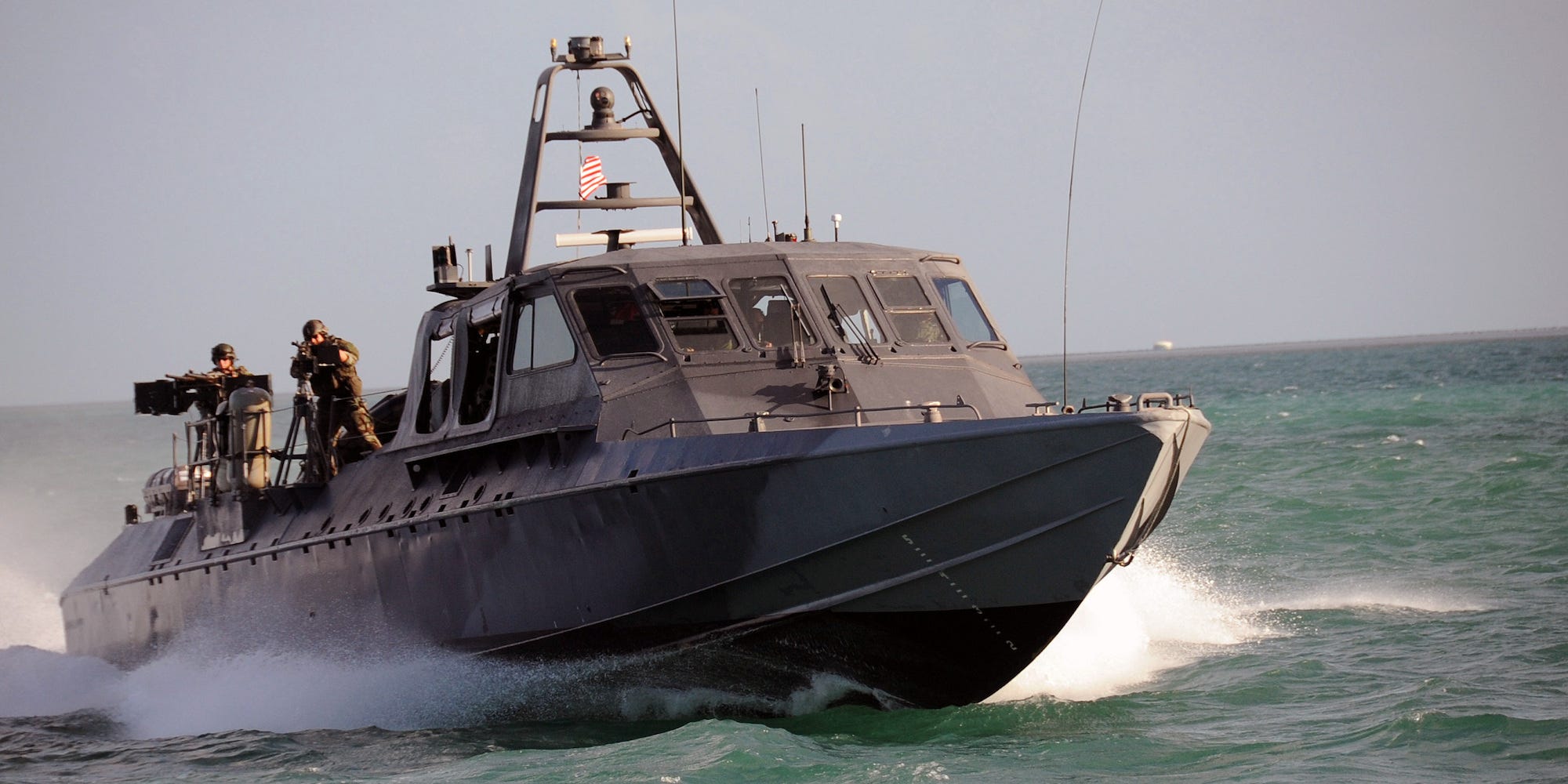
- The US and Greek militaries have continued to strengthen their relationship.
- At the end of 2021, the US transferred dozens of armored vehicles and specialized watercraft to Greece.
- Greece has sought to bolster its military amid increasing tension in the Eastern Mediterranean.
The US continues to strengthen its military partnership with Greece following the signing of the Mutual Defense and Cooperation Agreement in October.
The US is helping its Mediterranean ally now by transferring 1,200 surplus M1117 Guardian armored vehicles and four Mark V Special Operations Craft to the Greek military.
The combined value of the equipment is close to $1 billion, but it is being provided to Greece at a very significant discount under the US's Excess Defense Articles program.
Congressional approval is required for a country to receive EDA equipment. Therefore, the transfers reflect a "commitment to continuing to build on the strength of a relationship that has reached a high point but is not yet at its summit," according to US Ambassador to Greece Geoffrey Pyatt.
Hellenic Guardians
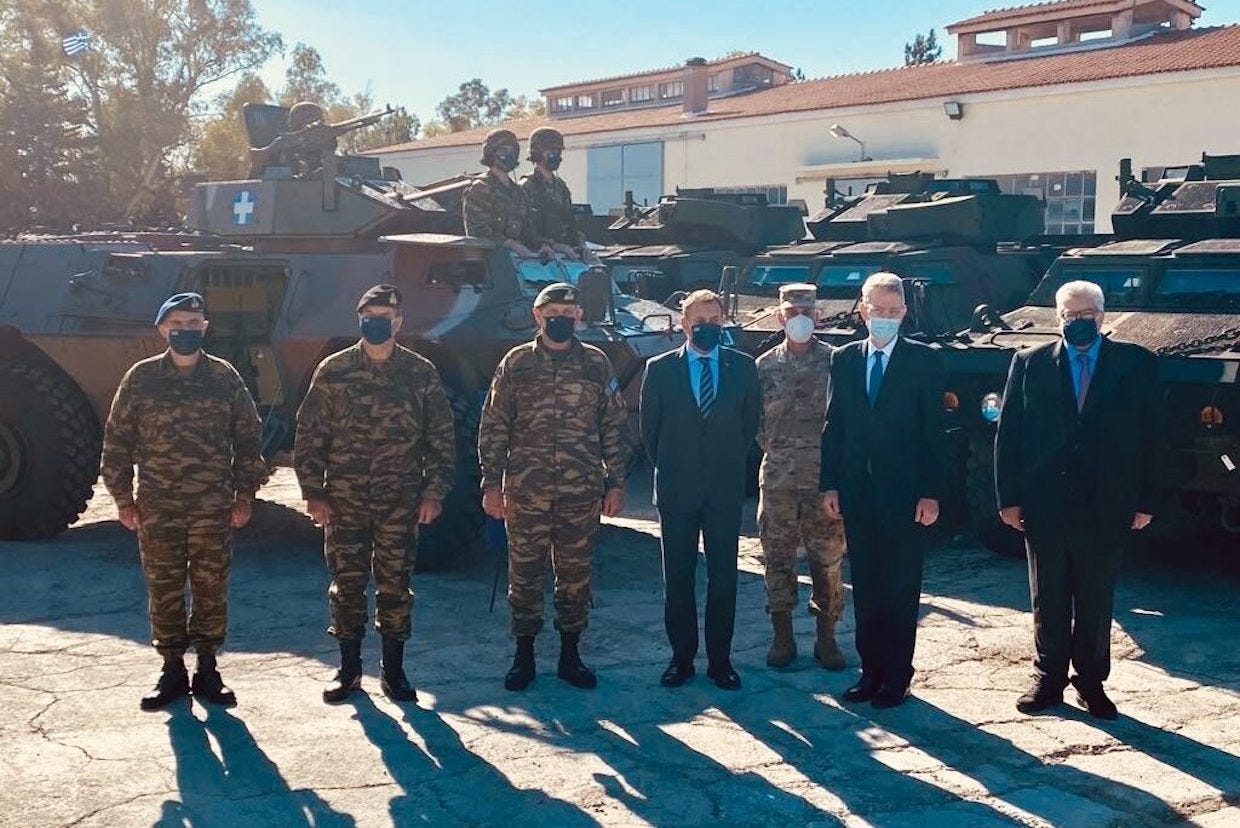
The Greek military will purchase the M117 Guardians for about $80,000 apiece — a discount of nearly 90% over their $800,000 production price.
However, the Guardians will be provided without armament; the Greeks will have to procure and install machine guns and grenade launchers themselves.
Forty-four vehicles have already been delivered to Greece. The remainder are to be delivered by April 2022. The M117 has a number of variants, but it is not yet known which Greece will receive.
The M117 Guardian was used in Afghanistan and Iraq, where its mine-resistant hull and ability to withstand small-arms fire made it popular among troops, but the Guardians' operational roles with Greece are likely to be limited, according to Savvas Vlassis, a Greek defense journalist and publisher.
The vehicles are expected to be used mainly on patrol missions, deploying primarily with Greek units in the Evros border region and on the Greek islands.
A special partnership
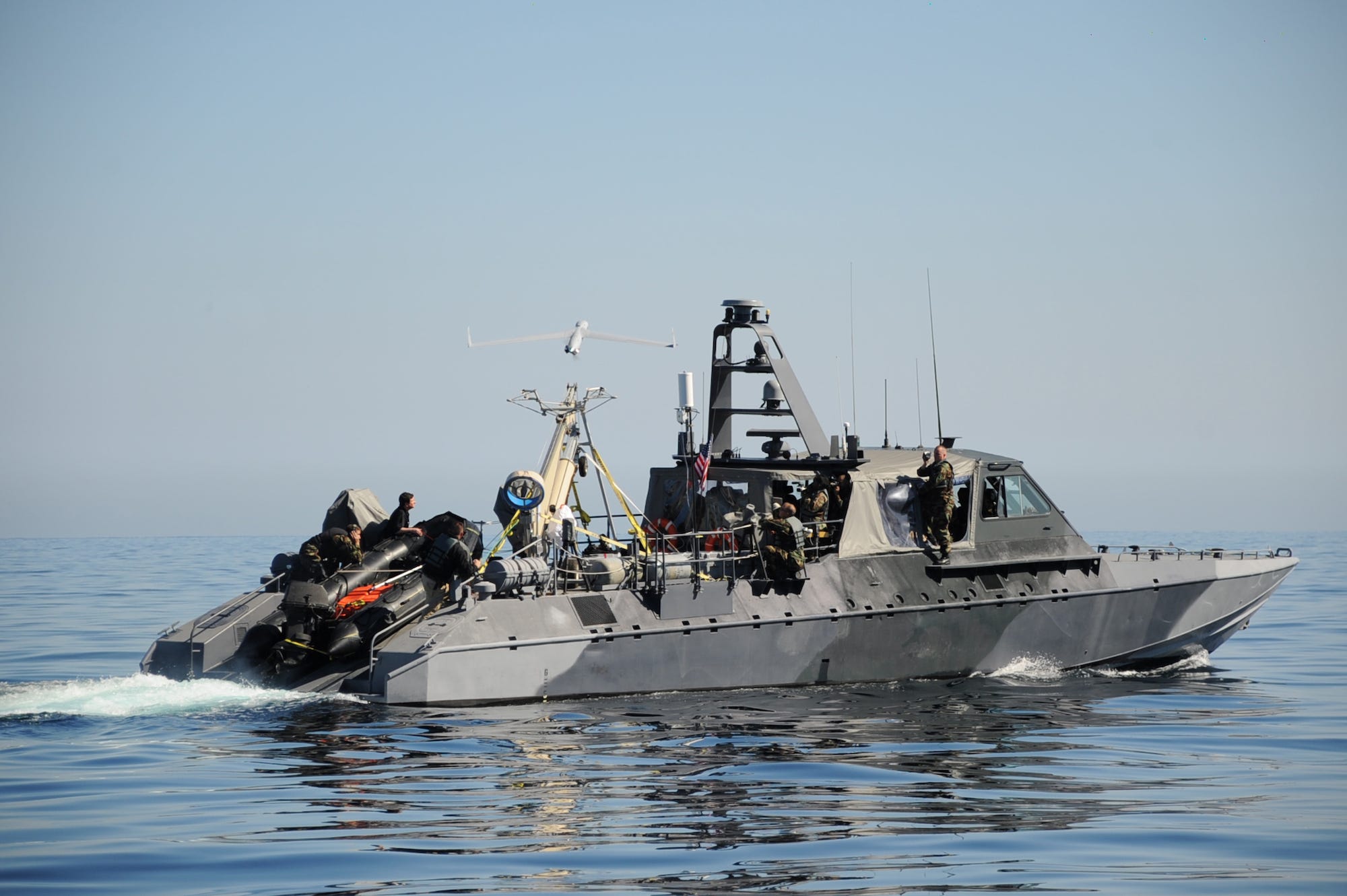
The Mark V Special Operations Craft are primarily used for insertion and patrol and were in service with the US Navy SEALs from 1995 to 2013.
Greece has the largest coastline in the Mediterranean and over 2,000 islands and islets, meaning the boats — Greece's first Mark Vs — will be particularly useful.
To showcase the Mark V's capabilities, US Navy SEALs and Green Berets from US Special Operations Command Europe conducted joint drills with Hellenic Underwater Demolition Command (DYK) operators in Attica, off the southeastern end of the Greek mainland.
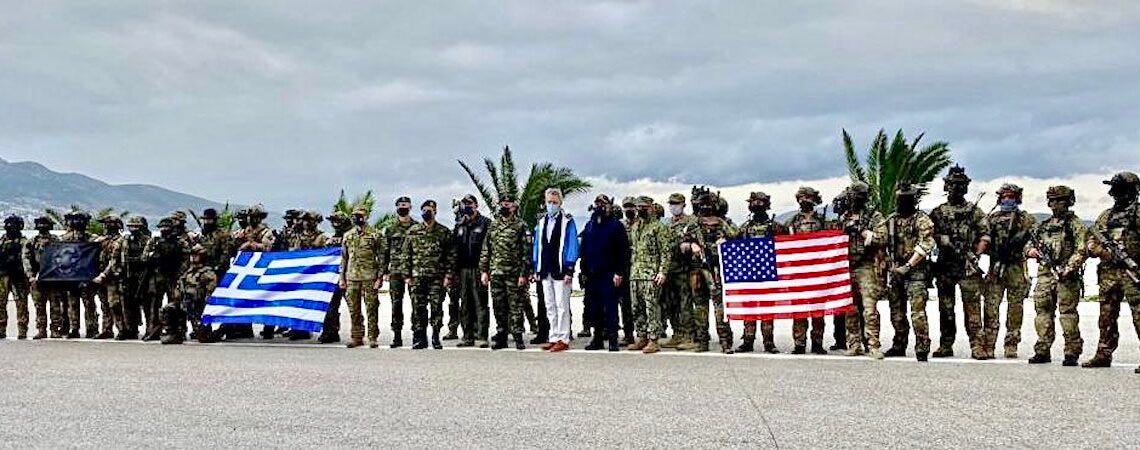
DYK operators are roughly equivalent to US Navy SEALs. The Greek selection process is based on the US Navy's BUD/S course, and the two units have similar attrition rates.
"I have been so impressed to see not only the growth in the US-Greece Special Forces partnership but also the way the Hellenic Special Forces are working across a wide region," Pyatt said during the drills.
Cooperation between Greek and US special-operation units is frequent and has increased in recent years, with the occasional inclusion of other regional partners. The Aegean topography allows for unique exercise scenarios centered around the Greek islands.
Although useful, the Mark Vs and M1117s are not Greece's biggest recent acquisitions.
Greek spending spree
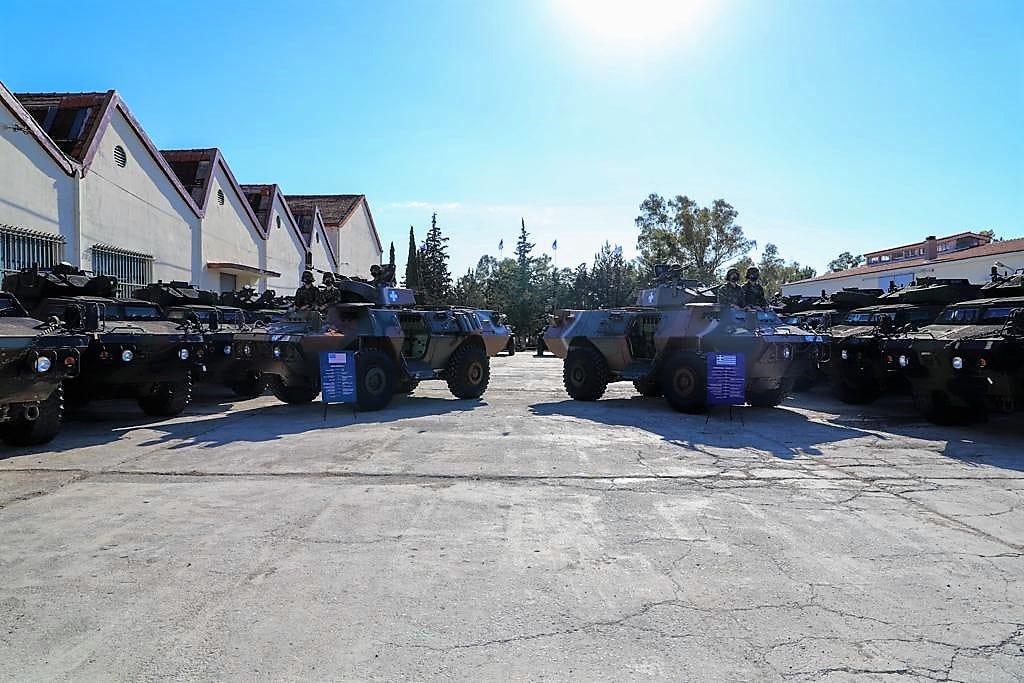
Greece has consistently been one of the few NATO allies to spend more than 2% of its GDP on defense — it has even exceeded US defense spending as a percentage of GDP in some years — due in large part to its longstanding rivalry with Turkey.
During the height of the Greek debt crisis, defense procurements stopped. However, since 2019 the country has pursued a major rearmament program, buying new equipment and upgrading older gear.
In 2021, in an effort to increase its power-projection capabilities in the critical Eastern Mediterranean region, Greece agreed to buy three Belharra frigates from France with an option for one more and 18 Rafale combat jets with an option for six more. Athens is also planning to buy four corvettes. The ships and jets cost roughly $7.35 billion.
Greece is in the process of upgrading 83 of its F-16 fighter jets to Block 72 Viper, the latest configuration, but has also expressed strong interest in purchasing F-35s.
Athens has also agreed to buy seven MH-60R multirole helicopters from Lockheed Martin. The cutting-edge helicopters will be outfitted for anti-submarine warfare and cost about $600 million.
Together, these purchases will significantly increase the Greek military's operational capabilities in what has become a tense intersection of Europe, Africa, and the Middle East.
A valuable NATO ally
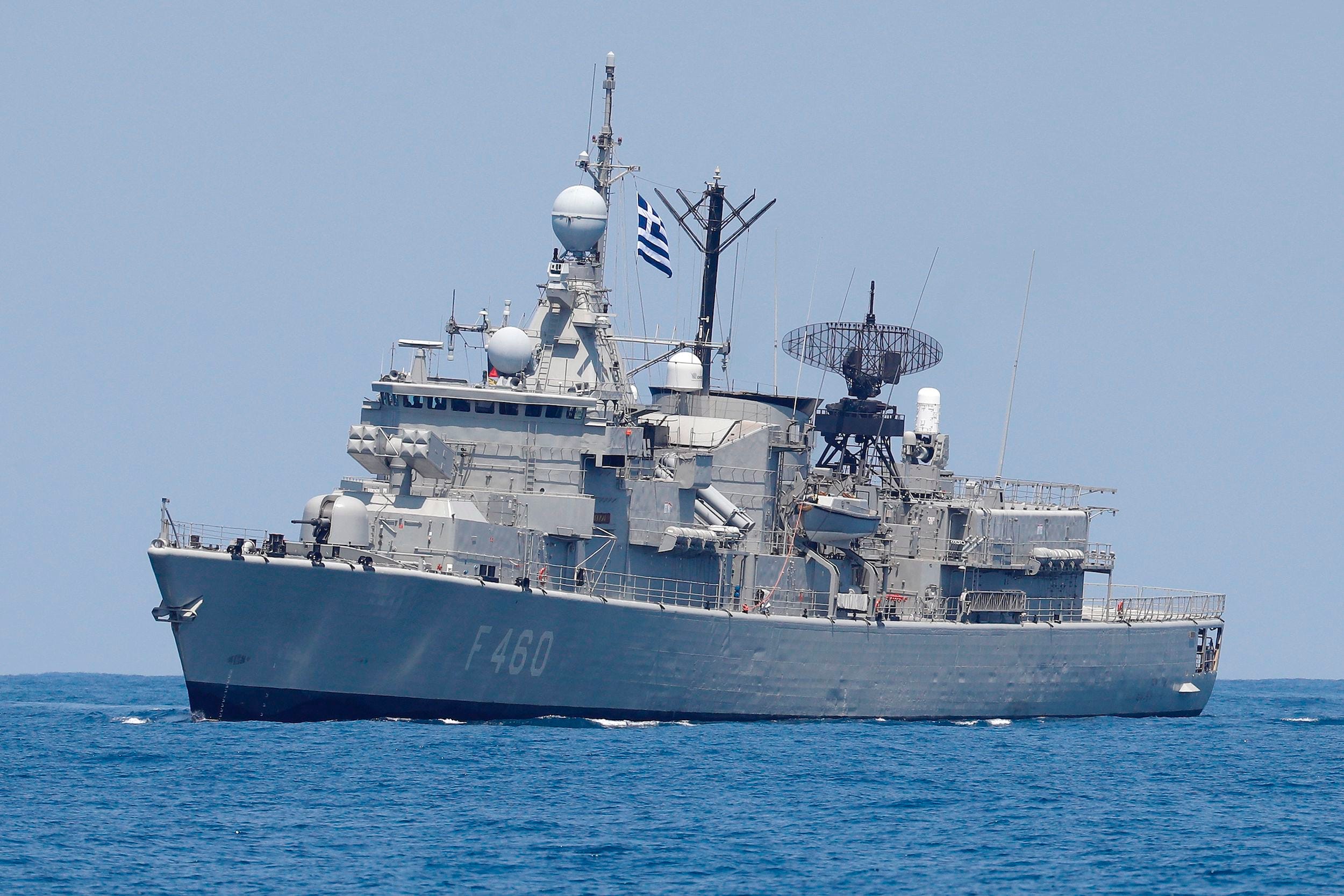
Due to the region's maritime character, the mainstay of the Hellenic Navy are its 13 frigates and 11 submarines, four of them highly advanced Type 214s, and it frequently operates in the central and eastern Mediterranean with regional partners and allies.
The Hellenic Army is an integral part of NATO's southern flank. It is structured to focus on the defense of eastern Aegean islands, north, and northeastern Greece.
The Greeks have one of the largest tank forces in Europe, with close to 1,300 main battle tanks. Most of them are German Leopards, though Greece also operates 390 upgraded but old US-made M48 Patton tanks.

Currently, the Hellenic Air Force has 231 fighters with a healthy mix of F-16s and French-made Mirage 2000s. Greek pilots are well regarded in NATO.
Greek forces are also active overseas. A regiment is permanently stationed in Cyprus, and Greek troops may soon head to the Sahel to support the French-led Operation Barkhane. A Greek Patriot anti-aircraft missile battery is deployed to Saudi Arabia.
As Pyatt said this month, "a Greece which is stronger and more secure makes our alliance stronger and more secure, and therefore makes the United States stronger and more secure."
